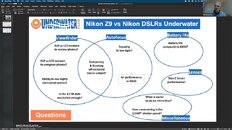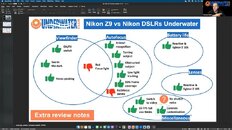Nicool
Contributor
Hi all,
I am giving an online talk / Q&A May 25th about this topic:
 www.divephotoguide.com
With the Z8 just announced, which is meant to perform the same as the Z9 in all areas but battery life, I thought this may be of interest to Nikon underwater shooters.
www.divephotoguide.com
With the Z8 just announced, which is meant to perform the same as the Z9 in all areas but battery life, I thought this may be of interest to Nikon underwater shooters.
You can access the event for free, while you're on a 7-days trial with The Underwater Club (need to start it before the event): The Underwater Club
Hope to see you there,
Nicolas
I am giving an online talk / Q&A May 25th about this topic:
The Underwater Club Fireside Chat: Nikon Z9 vs Nikon DSLRs
You can access the event for free, while you're on a 7-days trial with The Underwater Club (need to start it before the event): The Underwater Club
Hope to see you there,
Nicolas







